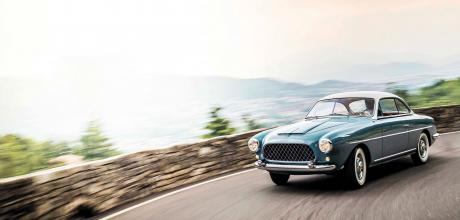1953 Cisitalia 808 Coupe
Henry Ford II himself commissioned Cisitalia to build the 80S. Ford’s first sports car? Time to lay bare a real rarity.
Words Mark Smyth
Photography Max Serra
THE ITALIAN JOB — CISITALIA 808 COUPE
Fascinating revival of Ford's lost sports car
It began as an attempt to fulfil a dream, not only of Henry Ford II but also of his father Edsel. To this day, some see the Cisitalia 808 as the first sports car that Ford created — except that the Ford Motor Company didn’t build it, because the 808 was not designed and built in Dearborn. Here was a mix of Italian design and craftsmanship overlaying American engineering, the highly individual results of which ultimately lost out to what became the first production sports car from the Blue Oval: the Thunderbird.
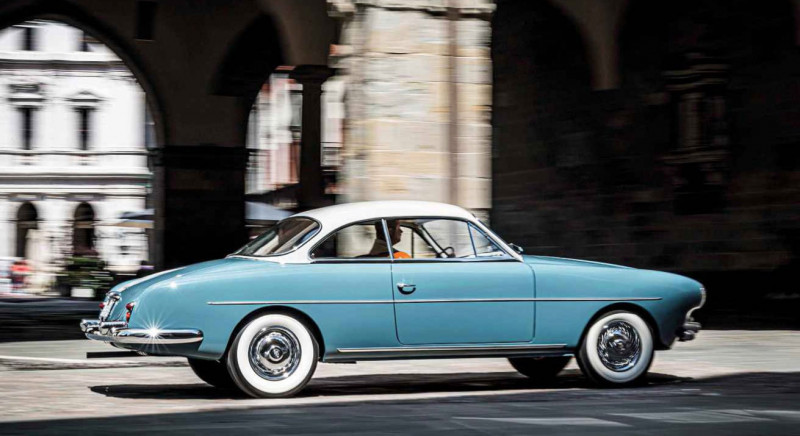
Compagnia Industrial Sportiva Italia, known more commonly as Cisitalia, was formed in 1939 Henry Ford II, who bought both coupe and convertible versions, by industrialist Piero Dusio. The onset of World War Two scuppered his early plans and in 1945 Dusio focused on making racing cars with his design engineer Giovanni Savonuzzi. He even pulled in Ferdinand Porsche to work on the mid-engined, four-wheel-drive Cisitalia 360 Grand Prix car, which proved so expensive to make that it almost bankrupted the company.
To recoup his losses, Dusio chose to make a sports car and teamed up with what was then Carrozzeria Pinin Farina in 1947 to create the Cisitalia 202. It found a fan in which were imported into the US by a New York dealership and sold well despite a high price tag of $6800. Ford was so enamoured with the design of the 202 that, so it’s alleged, he once turned to his design team and asked why they couldn’t pen a car as beautiful.
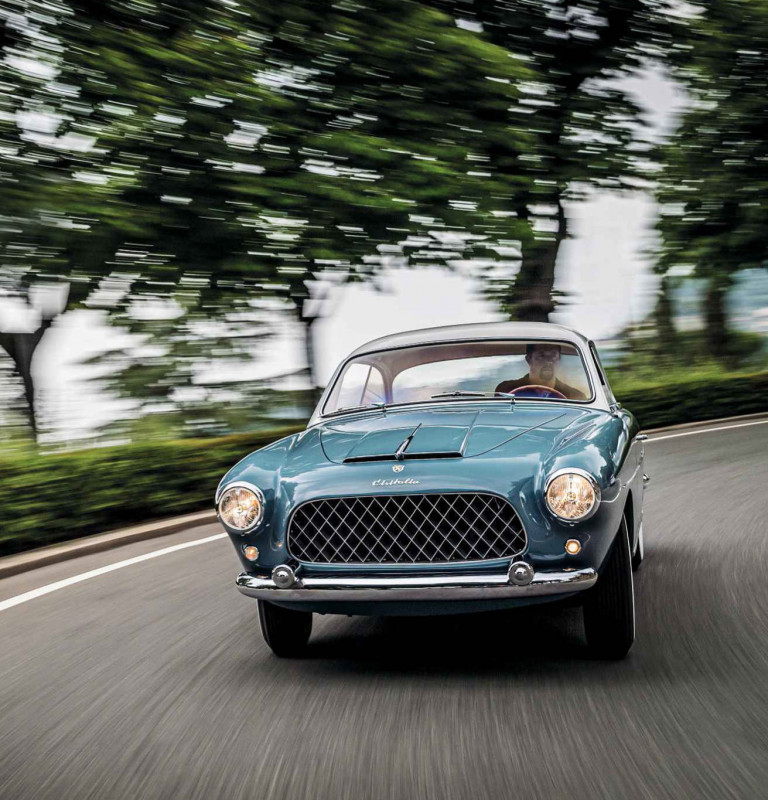
Beauty was not proving enough though, and again Cisitalia’s finances fell into a dire state. Dusio left Italy for Argentina, leaving it to his son Carlo to try to pick up the pieces. Dusio Jr saw Henry Ford Il's enthusiasm for the brand as an open door to the American automaker’s cash and in 1951 he and Savonuzzi arranged to meet the executive in Paris to propose a collaboration. Ford jumped at the chance to merge beautiful European styling with American mechanicals and they agreed to produce a number of prototypes for a new sports car.
The first prototype was designed by Felice Mario Boano and built by Ghia in Turin on a Cisitalia chassis. It was shipped to the US, where Ford’s engineers looked it over and voiced a number of concerns, not least of all its potentially high price. So it was back to the drawing board and Henry Ford II handed project management to his son-in-law, Peter Sullivan II of Long Island.

This time the design brief was given to Aldo Brovarone, who went on to design the Ferrari 246 Dino with Leonardo Fioravanti before becoming chief stylist at Pininfarina. Brovarone worked on the project with Savonuzzi but he also called in Giovanni Michelotti, a man more famous for his designs for Ferrari, Lancia, Maserati and Triumph.
To reduce costs, the decision was made to build the 808 on a Mercury chassis, far larger than that supplied by Cisitalia and very unlike anything produced in Italy at the time. Its size was more in keeping with the expectations of the US market and the chassis were shipped over from the US in 1952 together with Mercury six-cylinder engines, suspension and transmission. Cisitalia then enhanced the suspension and brakes, added dual carburettors and its own wheels, and created the body and interior.

All of this provided a major challenge for Brovarone, who was used to making much smaller cars. He described it as almost impossible to shape a cool, sporty and aerodynamic car over the top of the massive Mercury chassis and substantial engine, but what he achieved had all the Italian elegance that Henry Ford II was so smitten with. Four were built and it’s believed only two survive, both put together by Carrozzeria Vignale. One is a convertible that was fully restored more than a decade ago. That car is owned by Urs Jakob of California, who was so enamoured with its story that he undertook several years of research into its sibling, the coupe you see here.
The coupe was completed 70 years ago, in 1953, and was shown at that year’s New York Auto Show before disappearing for decades. In 2004 it popped up at the Bonhams Quail Lodge auction with an estimate of $40,000, but it was in poor condition and very few understood its significance. It didn’t sell and was returned to its owner in New Jersey. Jakob eventually tracked the car down and, fascinated by its provenance, arranged to buy it.
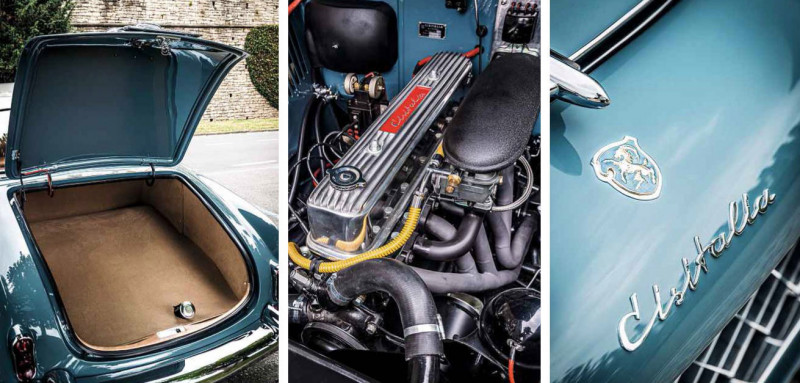
Opposite page Ford provided a six-cylinder engine in a Mercury chassis, somewhat larger than engineer Giovanni Savonuzzi and Carrozzeria Vignale were accustomed to, yet the results were nonetheless attractive.
‘There is adventure in a car that raises a question you don’t know the answer to,’ says Jakob.
‘It’s like a jigsaw puzzle that you have to put together when you have only part of the picture.’
To see that full picture, Jakob sent the 808 coupe to the restoration workshop of Carrozzeria Gatti Luciano in Bergamo, Italy, which had also restored the roadster. Along with Jakob they continued to search for pieces of the jigsaw, with various automotive historians, Cisitalia specialists and museums providing more information as the project progressed.
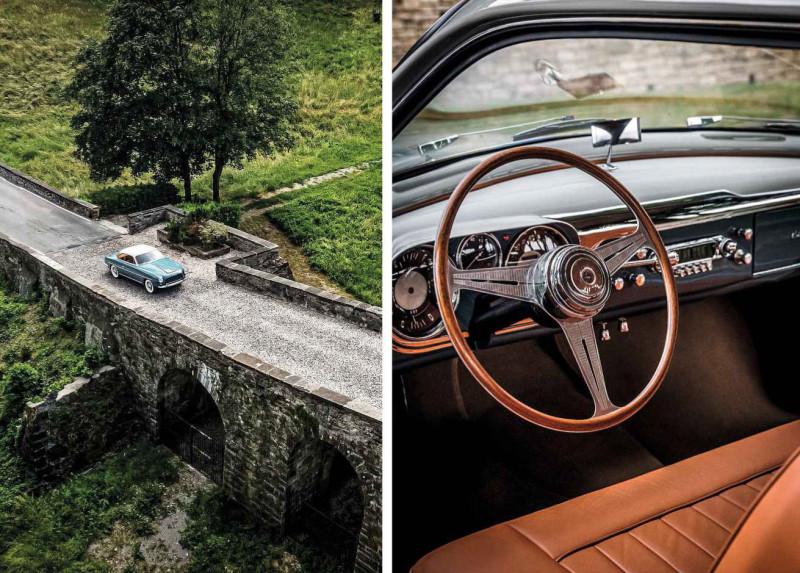
Above and below Elegance inside and out is typical of an Italian coachbuilt car of the 1950s; unflattering red paint was removed and the correct original shade investigated; re-creating the grille correctly involved a lot of sleuthing.

When the 808 arrived at the workshop in 2020, Giovanni Gatti described it as complicated’. In essence, it was a chassis with boxes of parts, bits of bodywork and the engine in disarray. It was missing key components such as the bumpers and looked rather sorry for itself. Research continued but one especially useful find was the original drawings, supplied to Jakob by Brovarone. There were also a few rare images of the car from the 1950s, including a couple from the New York Auto Show that clearly showed the bumpers. The car had acquired an unflattering red paint finish along the way, which had to be removed, and the original paint was then confirmed and sourced, something that proved a challenge as the images didn’t give a perfect picture of its unique colour.
According to Gatti, however, the biggest challenges were to understand the exact shapes of components such as the bumpers and wheel caps, which needed to be made from scratch. The same was true of the unique grille, which in typical handbuilt fashion was not perfectly symmetrical, and it was down to the restoration team to try to judge the correct imperfections and replicate it. Even when the team was well down the line with the restoration, new images emerged of the rear of the car. Gatti explained that the lights had been different from what they had and so they needed to start on them again.
One of the biggest issues with Carlo Dusio and Savonuzzi’s original plan was the fact that it would take months to create the panels for each car by hand. In the same way, many of the body panels were again handcrafted during the restoration. With far less in the way of engineers’ specifications to work from than in the 1950s, this work took even longer the second time around.
When I visited the workshop, Gatti explained that 80% of the work had been done in-house, including all the bodywork. Electrical components were fitted at the workshop; so too was the upholstery. The seats and other trim pieces were stripped and re-created from scratch. This included the cross-tilting backrest of the front passenger seat, a beautiful piece of craftsmanship that provides easy access for those sitting in the broad rear seats. Thankfully, sourcing parts for the Mercury six-cylinder engine was more straightforward, with much available through US specialists.
Brovarone was thrilled to see the convertible after its restoration. Sadly he was never to see the coupe, as he passed away in 2020 before the work was completed — he had never witnessed the fruits of his work when they were first built. Perhaps that was merciful, as Ford’s own engineers and its board of executives didn’t share the chairman’s passion for Italian design or for the way the Italians worked. While imperfections such as those on the grille might be seen as endearing in an Italian sports car, to the American automaker they were unacceptable.
Over the years many automotive historians have acknowledged the role of the Cisitalia 808 but ultimately it failed to meet the strategy originally conceived by Henry Ford II: to mass-produce cars as cheaply as possible. It’s unlikely it could have been mass-produced at all, in fact, as Carlo Dusio was able to commit to only a maximum of 1000 cars a year. Eventually he suggested manufacturing in the US.
At the same time, other executives within Ford were looking at different ways to create a sporty car and, in 1951, its vice president Lewis Crusoe expressed an interest in making such a car after visiting the Paris Auto Salon. With significantly more internal backing than the 808 had ever enjoyed, the design and engineering teams set to work on what was to be revealed in 1954 as the Ford Thunderbird.
Straight away the Cisitalia 808 was relegated in status to a chairmans folly project. While there are many great examples of American-Italian co-operation and success, including the Ford-engined De Tomaso Pantera and the Ghia studio, the 808 was not to feature among them.
It was, however, a perfect marriage of American mechanicals and Italian styling, less a two-seater roadster like the original Thunderbird and more a four-seater luxury sports coupe, as the 1958 Thunderbird subsequently became.
‘You could certainly call the 808 coupe a sports car. Was it the first mass-produced sports car? No,’ says Jakob. However, it was exactly the kind of car Henry Ford II wanted to produce, with emotive design plus the longdistance comfort and power US customers expected.
‘It feels good to put something together that the collective out there can enjoy years down the road,’ says Jakob. ‘It’s a period piece. It says something about a particular place at a particular time, what human beings were doing there at that time and how this affects us today. The cars that came after it — the T-bird, the Mustang — they affected us, and somehow this is part of that line.’
The Cisitalia 808 was a last attempt to save Cisitalia and to fulfil the dream of both Edsel Ford and his son Henry II, and its restoration ensures that it lives on as a whispered chapter in the history of the Ford Motor Company.
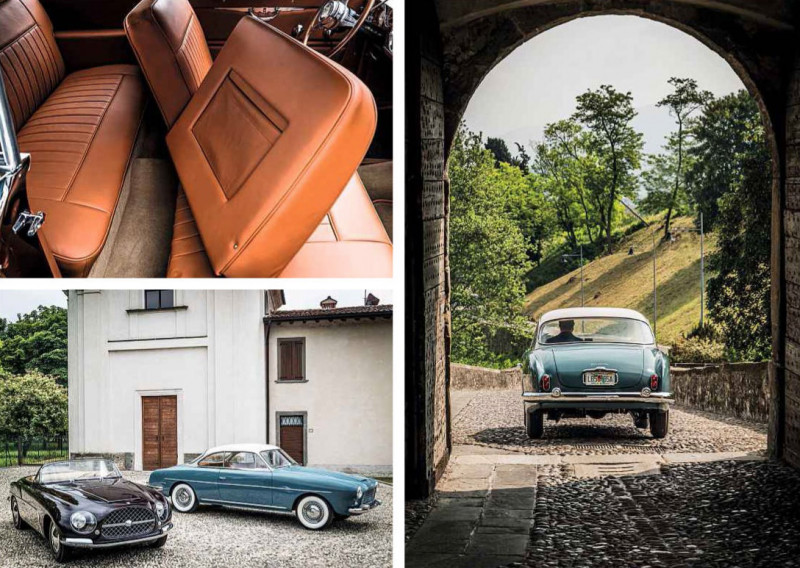
Above Cross-tilting backrest ensures easy rear-seat access but took ingenuity to re-create; coups and roadster are the sole survivors, both owned by the same collector.
‘IT ARRIVED AS A CHASSIS WITH BOXES OF PARTS, BITS OF BODYWORK AND THE ENGINE IN DISARRAY’
TECHNICAL DATA 1953 Cisitalia 808 Coupe
- Engine 3654cc OHV straight-six, Weber 40 carburettors
- Max Power 120bhp @ 4000rpm
- Max Torque 140lb ft @ 3500rpm
- Transmission Three-speed manual, rear-wheel drive
- Steering Worm and roller
- Suspension Front: double wishbones, coil springs, telescopic dampers. Rear: live axle, semi-elliptic leaf springs, telescopic dampers
- Brakes All Drums
- Weight 1180kg
- Top speed 110mph
- 0-60mph 12.0 seconds


